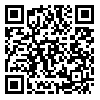BibTeX | RIS | EndNote | Medlars | ProCite | Reference Manager | RefWorks
Send citation to:
URL: http://rehabilitationj.uswr.ac.ir/article-1-1276-en.html

 , Afsoun Nodehi-Moghaddam1
, Afsoun Nodehi-Moghaddam1 
 , Zahra Mosalla-Nezhad *2
, Zahra Mosalla-Nezhad *2 
 , Amir Masoud A'rablou1
, Amir Masoud A'rablou1 
 , Mohammad Reza Nourbakhsh3
, Mohammad Reza Nourbakhsh3 
 , Enayatollah Bakhshi4
, Enayatollah Bakhshi4 

2- University of Welfare & Rehabilitation Siences, Tehran, Iran. ,
3- State University of Georgia, PT Department
4- USWR, Biostatistics Department
Objective: Trigger points may result in referral pain of their close areas. Recent evidence suggests that latent trigger points although they are not sensitive enough to cause pain, can interfere with the normal muscle function. These myofascial trigger points are estimated as an electro-physiological phenomenon. However, there are a few studies which investigated the effect of these points on the muscle activity. Muscle activity is a determinant factor in injuries which may cause or worsen shoulder-neck pain. The aim of the study was to evaluate upper trapezius muscle activity and delay time at the presence of active trigger point during scapular plane elevation (scaption).
Materials & Methods: In a case-control comparative study in spring 2012, Seventeen women with active trigger points (mean age 26.76 y) and 17 healthy women (mean age 26.18 y) in bio-mechanic laboratory of University of Social Welfare and Rehabilitation sciences (USWR) participated in the study. Using surface EMG, the amplitude of muscle activity and the onset time of upper trapezius during scaption, were recorded and analyzed.
Results: The maximum amplitude of the upper trapezius muscle activity (during maximal voluntary isometric contraction of 90°scaption) in patients showed significant decrease in comparison with the healthy subjects (P=0.01).Also, the onset time of upper trapezius muscle activation time in the patient group was significantly delayed in comparison to the healthy group (P=0.04).
Conclusion: At the presence of trigger points in Upper trapezius muscle, muscle activation pattern changes trigger points can change the amplitude and timing of muscle activity and may consequently lead to abnormal patterns of motion of the shoulder girdle. These findings can be used in the prevention and treatment of shoulder disorders.
Received: 12/04/2013 | Accepted: 15/10/2013 | Published: 15/06/2014
| Rights and permissions | |
 |
This work is licensed under a Creative Commons Attribution-NonCommercial 4.0 International License. |



